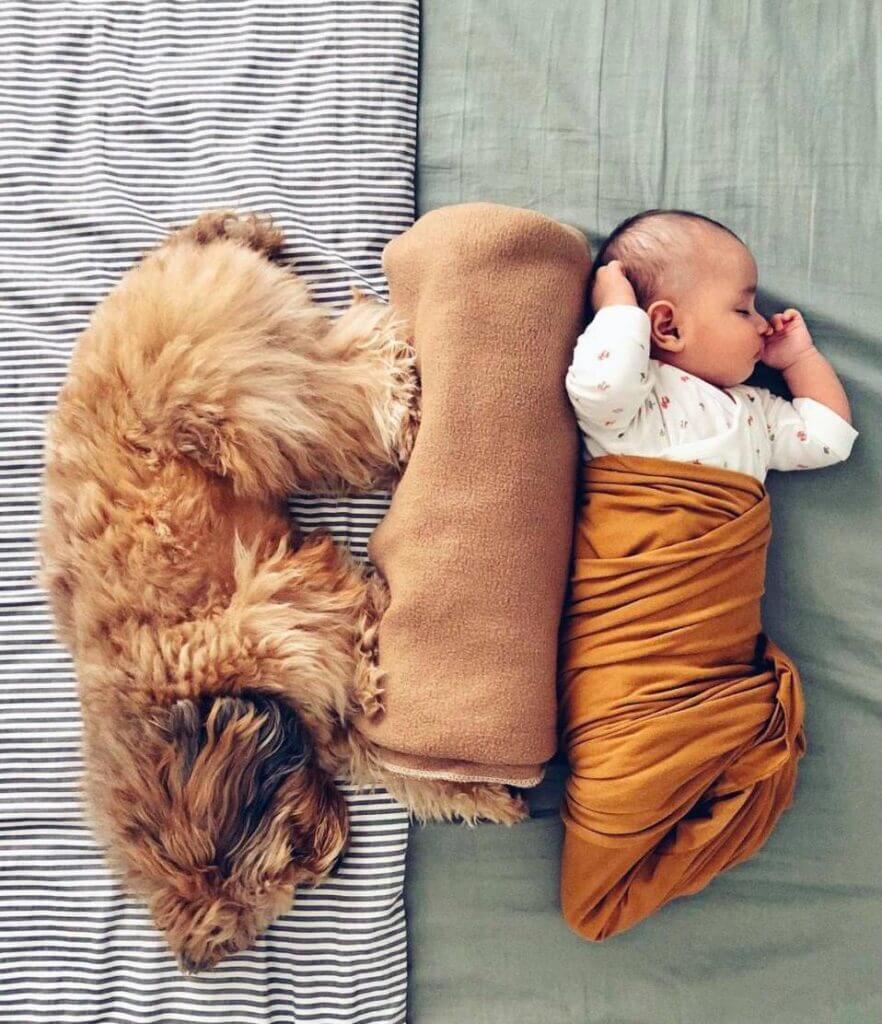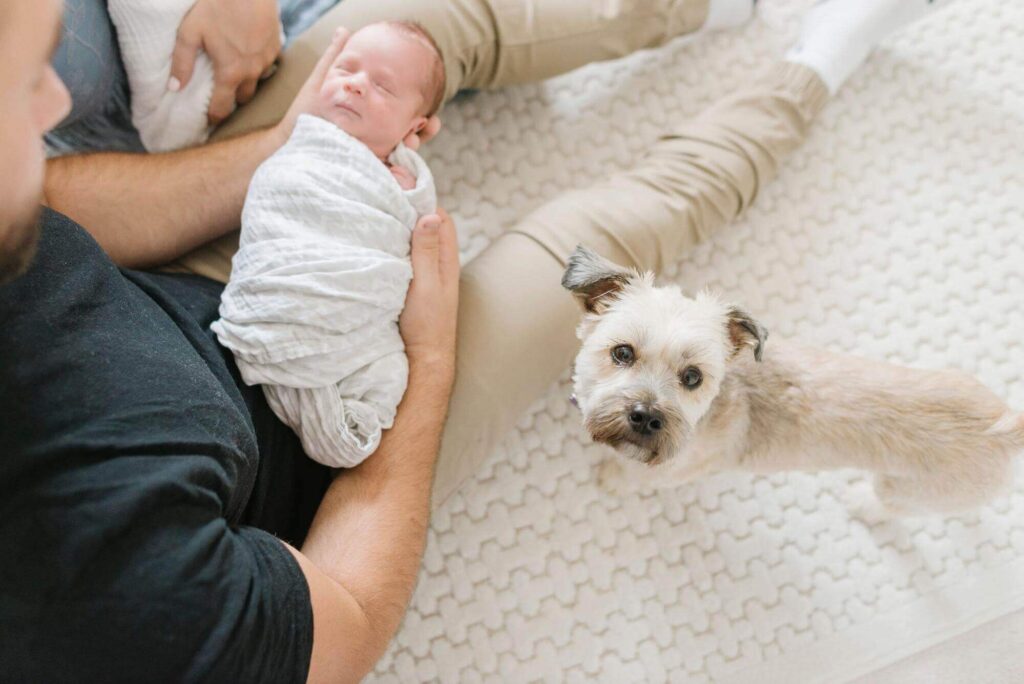Prep your pet early for the arrival of your baby
When we were expecting our first child, I created a to-do list and drove my husband nuts with articles on strollers and sleep techniques. It occurred to us that our four-legged baby, Toby, a seven-year old Morkie, might not be thrilled with the arrival of a new pack member.
What if Toby doesn’t get along with the baby? We consulted our trainer and read everything we could on how to safely introduce our tiny human to our furry boy.
While Toby didn’t understand exactly what was happening, he was certainly tuned to our emotions. It was our job to provide clear leadership to ensure a successful integration.
These techniques proved invaluable before that first Meet N’ Greet with Toby and baby Duncan.
Top off your Training
Toby was proficient with sit, down, and stay, but our trainer suggested we expand his repertoire to include “Place”. We taught him to retreat to a safe spot when we needed him out from underfoot. We added a special mat to the main floor of our house and over several months trained him to go to his “place” when asked.
Our trainer also explained the danger of allowing Toby to rush up or down the stairs alongside us, creating a dangerous tripping hazard with an infant in your arms. We taught him to “lead” us by several steps, giving our working dog a “job” to do.
Finally, we touched up Toby’s ability to calmly greet visitors. “Calmly” is a relative term (it’s a work-in-progress).
Reestablish the Rules
Decide which routines in your house will change once the baby arrives, and start practicing so the adjustment is not abrupt and confusing.
Will your dog be allowed on the furniture? On beds? Will games like fetch and tug-o-war be relegated to outside only? If previously accessible rooms will be off-limits, install baby gates to help them navigate the new lay of the land.

We knew the baby’s room would be all-access to Toby, so our trainer suggested placing a dog bed in the nursery with treats. Ultimately, he will develop positive associations with the room.
Whatever changes you’re planning to make, make them early and practice often, rewarding with praise, attention and treats.
So many smells!
The carseat! Diapers! Baby soap! The experts at the American Kennel Club suggest placing everyday items around your home, allowing these new additions to the scent landscape to become familiar.
We followed the AKG.org recommendation to mitigate the “fear factor” of large pieces of baby gear by introducing them early. We set up the crib, changing table and bouncy chair and let Toby investigate.
If you can tolerate it, consider playing a recording of baby noises at unpredictable times to acclimate to these foreign sounds. We tried this a few times. Toby glared then skulked off to his hiding spot under the stairs. Truthfully, we felt like joining him.
Get comfortable with unpredictability
Six weeks before my due date, we made small changes to Toby’s routine to get comfortable with unpredictability, the one constant with a newborn. We altered his feeding and walk times slightly, and we’d push the empty stroller on walks.
Our trainer mentioned a common pitfall: don’t lavish your dog with attention now, thinking it will make up for a lack of attention when the baby arrives. If anything, she said, a sudden decrease in attention can lead to confusion, depression and jealousy.
Hiring a dog walker or using doggy daycare can be a lifesaver, especially in the first months of parenthood when you’re living in an upside-down world. Not only do you get a break, but it ensures your dog is getting the exercise and mental stimulation they need, which makes for a happier dog. Start incorporating those services now so they’re not foreign later.
The Big Day, bringing baby home.
On Meet N’ Greet day, we made sure Toby was well-exercised and had plenty of treats to reward good behavior.
The pros at ASPCA.org suggest having one partner hold the baby while another holds the dog’s leash and allows them to sniff. Pay attention to your dog’s body language, which should be relaxed. Give them positive reinforcement, and then give your dog a break after a few minutes. So you allow them to retreat to a safe space if necessary. Gradually increase their time spent together.
Safety always comes first; if your dog becomes stressed, overwhelmed, or aggressive, remove them to a safe space like a crate or room closed off with a baby gate, both for their safety and your baby’s. Seek professional help if your dog continues to display questionable behavior around your baby.

It was a beautiful autumn day when Duncan came home from the hospital. After much sniffing and tail wagging outside (Duncan slept through it) we moved inside and settled the baby into a bassinet. Some more sniffing ensued and then Toby settled himself on the couch next to his “brother” where he could keep a protective eye on things. Luckily, Toby adapted easily. His favorite spot quickly became wherever Duncan was, so that meant his favorite place to nap was right next to the crib. Lucky for us, they were besties from the start and it was worth prepping Toby for the change.
Planning ahead can help a smooth transition and pays off in the long run when your “children” find their BFF. Enjoy your newly expanded family!




















